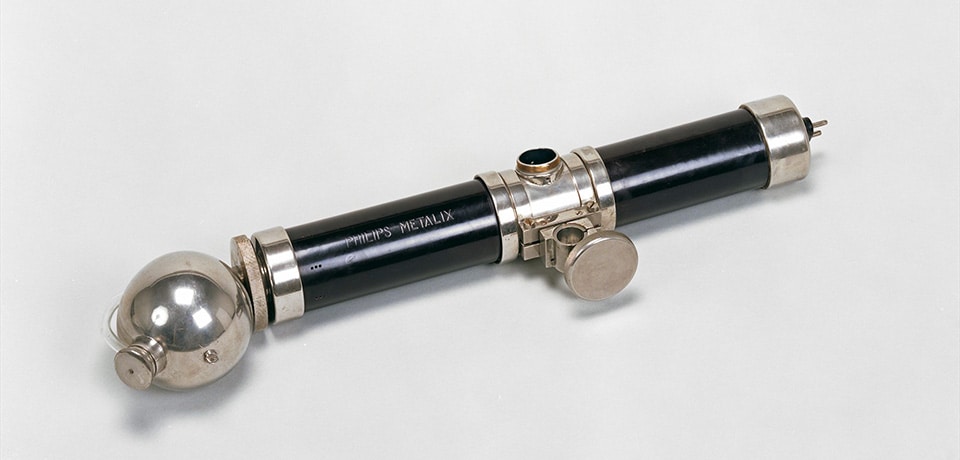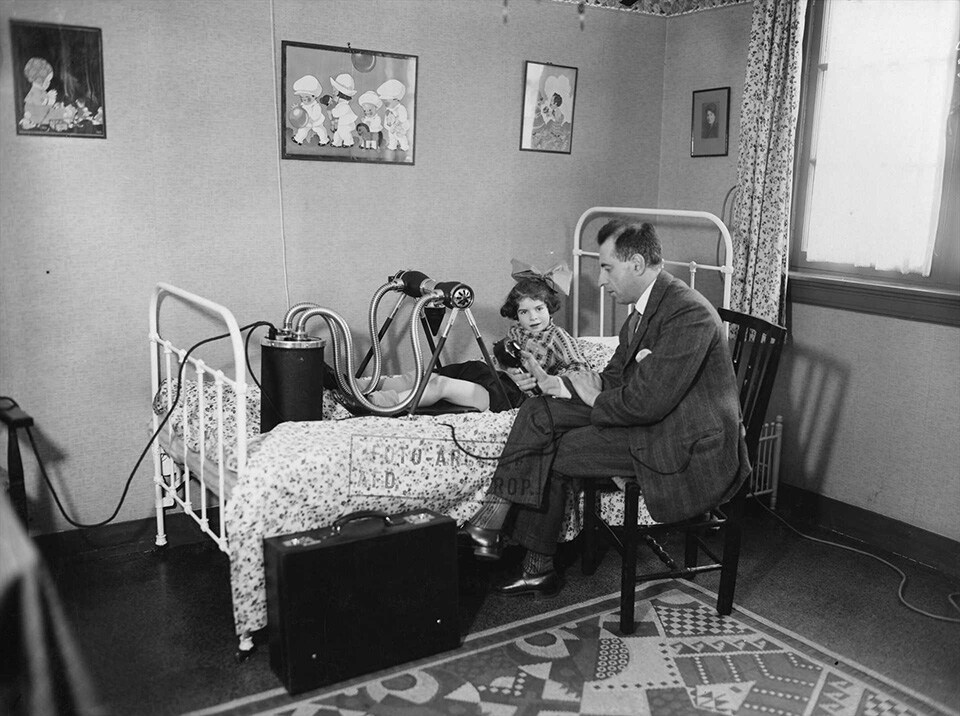In 1896, a few months after Wilhelm Röntgen made the discovery of x-rays, Frederik Philips wrote to his sons Gerard and Anton that a device had been invented in Germany with which you could "look the girls straight in the heart. However, it would be until 1918 before Philips started making x-ray tubes. The first Philips patent in the field of X-ray tubes was granted in 1919.
Two groundbreaking inventions
In the 1920s, Albert Bouwers made two groundbreaking inventions at the Philips Physical Laboratory in Eindhoven: Metalix (1924) and Rotalix (1929).
With the Metalix tube, Albert Bouwers developed an entirely new type of X-ray tube with a metal casing, which was much safer for doctors and patients than the tubes used until then. This tube offered better protection from dangerous X-rays. He used a 1922 invention by Gilles Holst (director of the NatLab) for compounds of glass and metal. This was followed in 1928 by the introduction of the first Philips X-ray machine, Metalix-junior.
Sharper image
In 1929 Philips introduced the Rotalix tube, an X-ray tube with a rotating anode. This modification made the tube less likely to overheat, allowed radiation of a higher intensity to be used and obtained sharper images, making not only bones but also tissues such as lungs and heart more visible. The Rotalix principle is still used in X-ray tubes for medical use.
Text by Philips Company Archives.
Copyright: Koninklijke Philips N.V. / Philips Company Archives

Philips Metalix X-ray tube (1924-1925)

Mobile Metalix x-ray tube (1930)
Want more fun Eureka facts?
October is History Month, the largest history event in the Netherlands. Together with hundreds of cultural institutions, bookstores and libraries, we bring history to the attention of millions of Dutch people.
This year's theme is Eureka! And a lot of inventions have been made at Philips. That's why we like to give some extra attention to important discoveries made in Philips history.
Keep an eye on our website this month for even more fun Philips inventions.
Also read the post about Philips very first patent:


